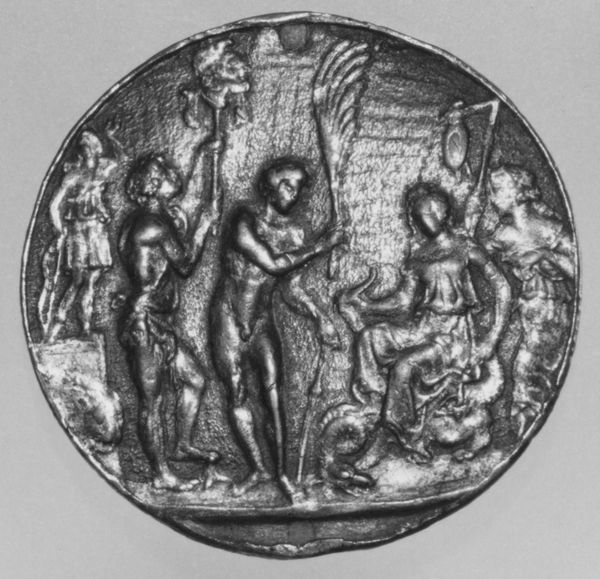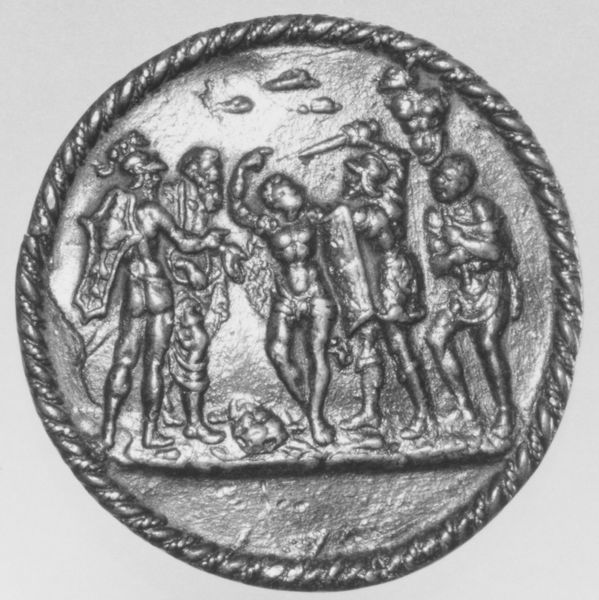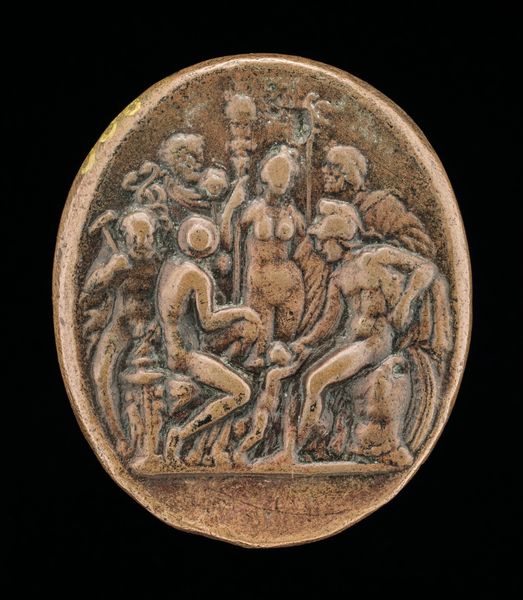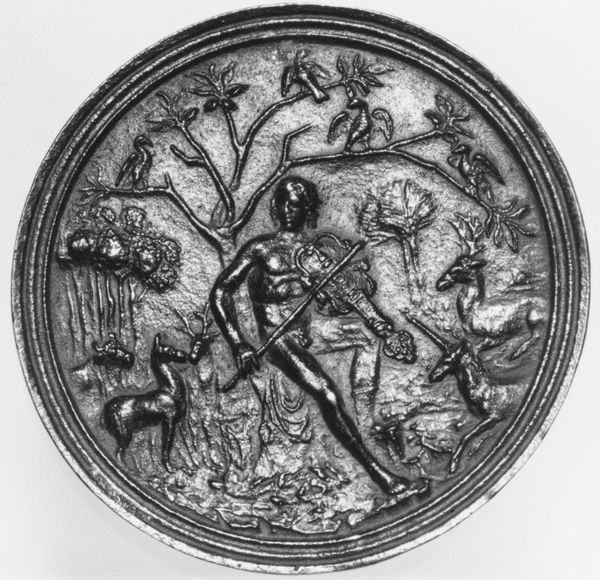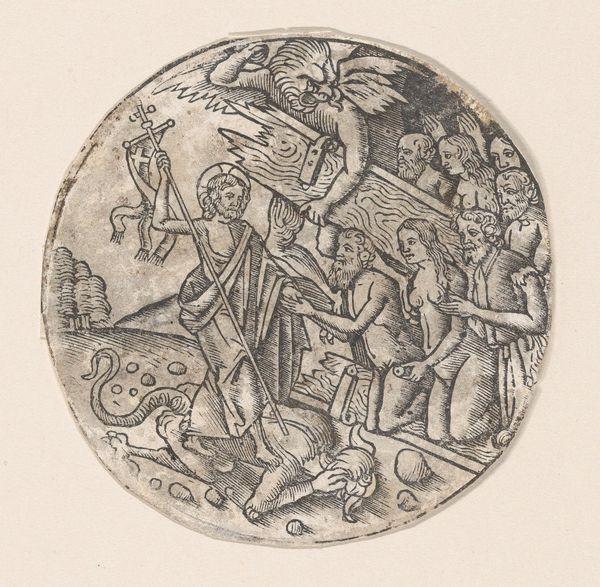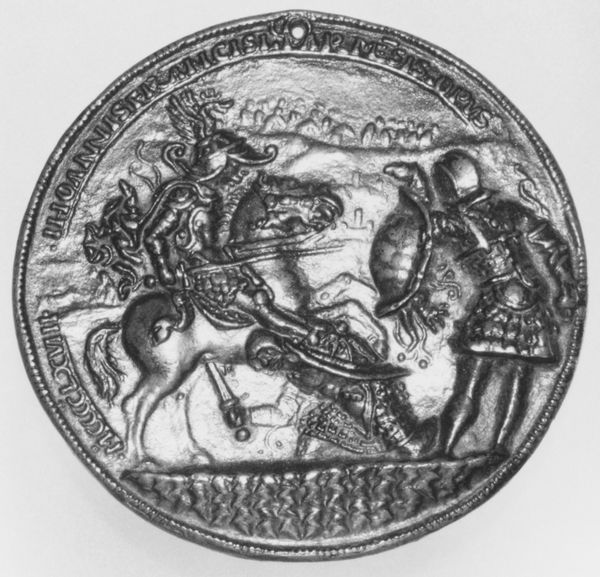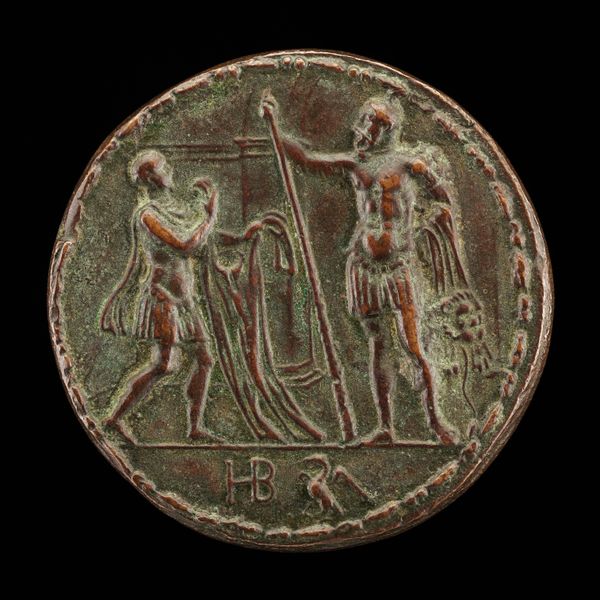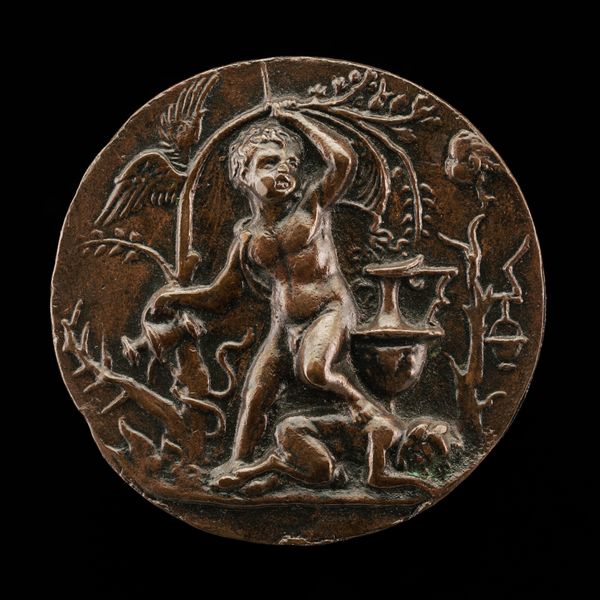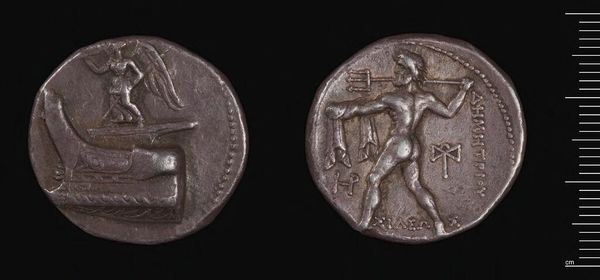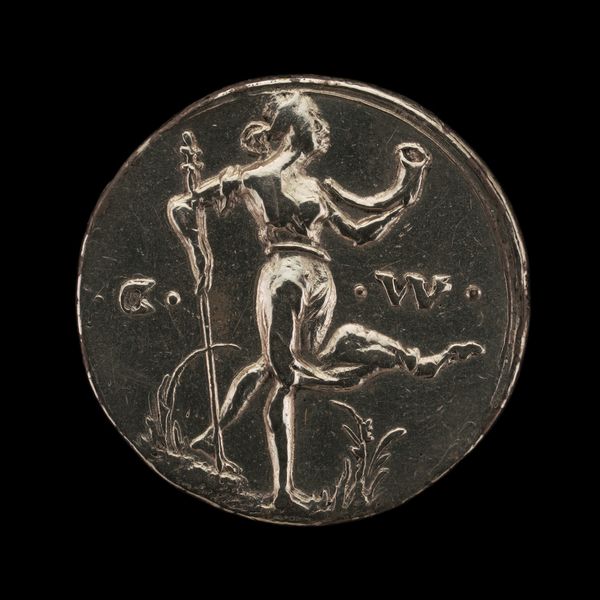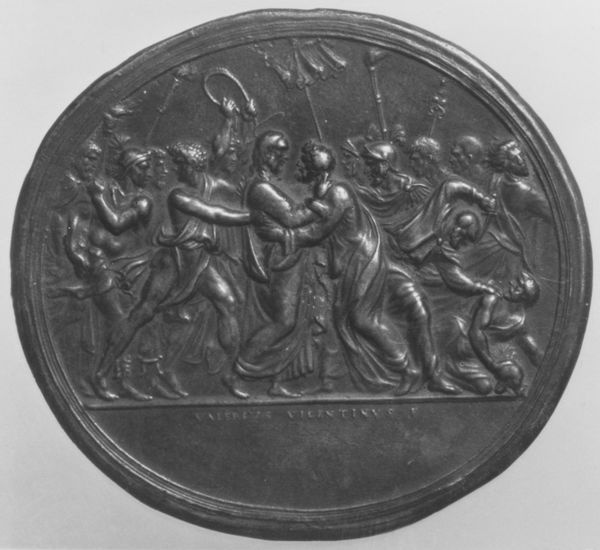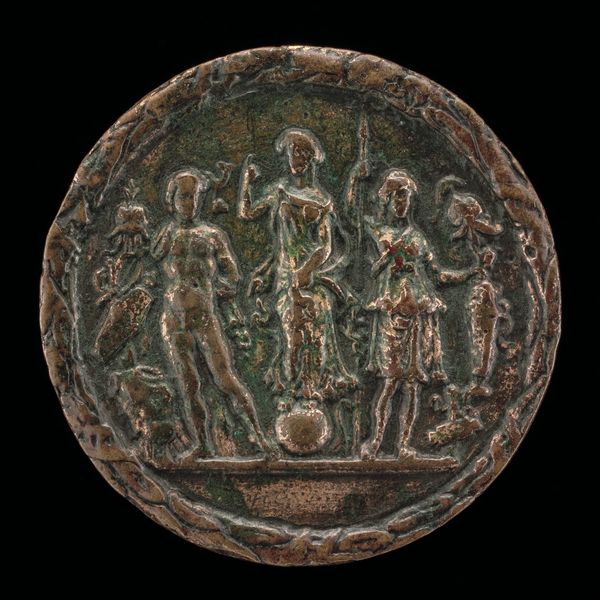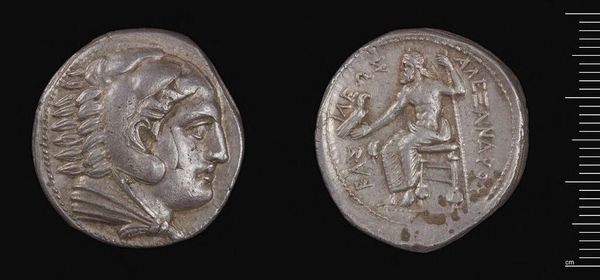
The Graces and Venus Dancing before Mars 19th century
0:00
0:00
carving, relief, sculpture
#
medal
#
neoclacissism
#
carving
#
allegory
#
relief
#
classical-realism
#
figuration
#
ancient-mediterranean
#
sculpture
#
carved
#
history-painting
#
decorative-art
Dimensions: 2 3/8 × 2 7/8 in. (6 × 7.3 cm)
Copyright: Public Domain
Editor: So, here we have Antonio Canova’s 19th-century relief sculpture, "The Graces and Venus Dancing before Mars," currently residing at The Met. It’s fascinating, the figures seem to be caught mid-motion. What’s your take on it? Curator: Indeed. Note how Canova has rendered this scene entirely through line and form. Observe the shallow depth of the relief, yet the figures retain a clear sense of volume. How does the circular format affect the composition, in your opinion? Editor: I guess it confines the action, focusing it on the interplay between the figures instead of some wider environment? Curator: Precisely. See how the curves of the dancing figures and Venus’s drapery echo the medallion’s circumference. This creates a visual harmony, almost a rhythm, that’s pleasing to the eye. Further, the interplay between light and shadow animates the piece and provides detail. Editor: So it's about the shape, the arrangement, the pure aesthetic qualities rather than a message? Curator: I wouldn't entirely negate a symbolic narrative; clearly there’s an intended allegorical connection of beauty and dance. The key thing to observe here is the controlled aesthetic of Neoclassicism – a formal clarity achieved through skillful handling of relief sculpture. Does anything strike you about the treatment of texture in relation to its subject? Editor: It seems…almost flattened. Like the texture doesn’t really reflect reality, but a stylized version. Curator: An astute observation. Canova here privileges an idealized smoothness and refined contour, rejecting excessive detail in favor of an elegant restraint typical of this era’s interpretation of Greek forms. We must consider then, the intention and impact of aesthetic choices when faced with art such as this. Editor: I hadn't considered the flattening. Looking at it now, I see how every detail contributes to that unified visual language. Curator: I find that is true with all things, if you simply observe.
Comments
No comments
Be the first to comment and join the conversation on the ultimate creative platform.
